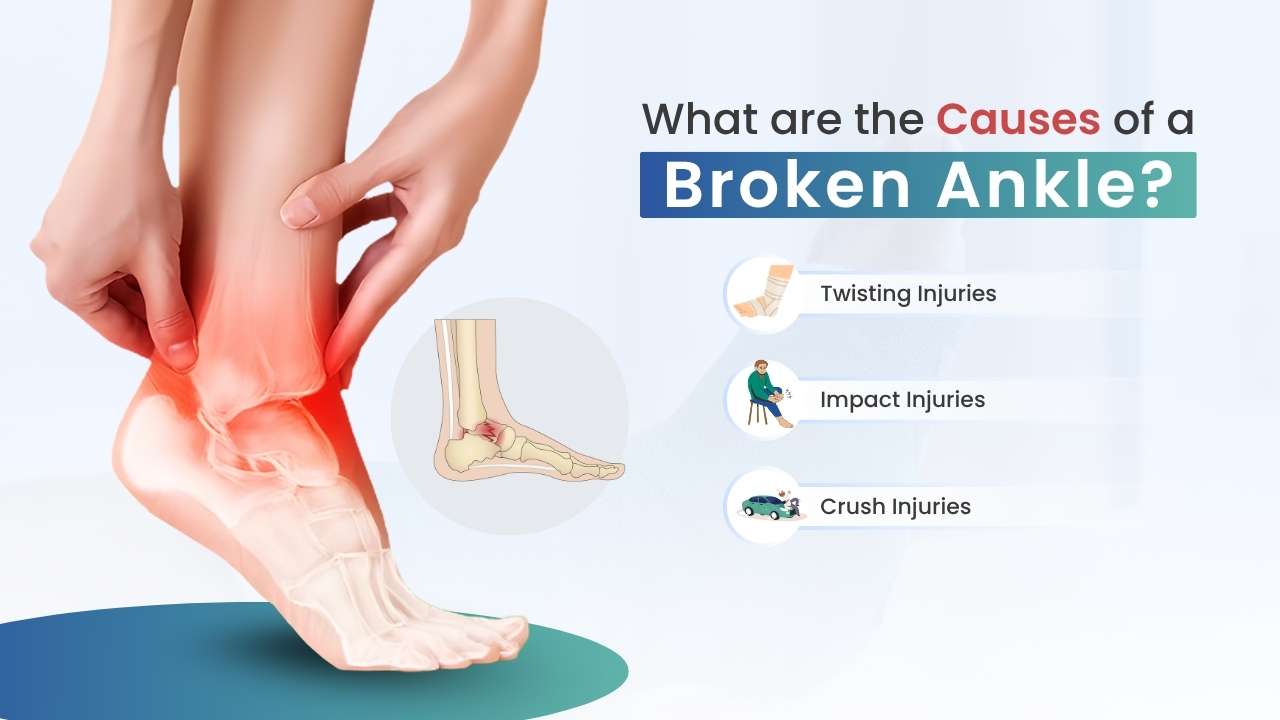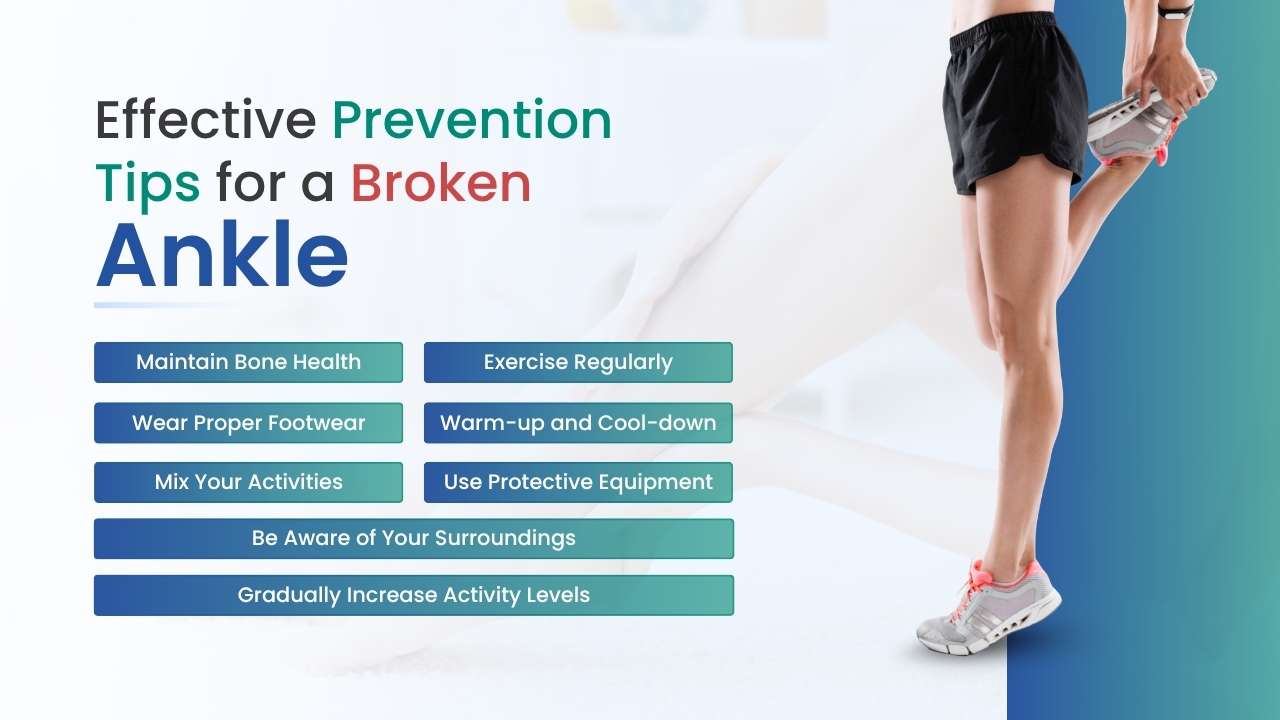Home Blogs Orthopedics How Long Does a Broken Ankle Take to Heal

If you have suffered an ankle fracture, you may be asking yourself How long does a broken ankle take to heal. However, recovery time depends on the type of fracture, treatment, and your overall health. While every case is different, understanding how a broken ankle heals can help you set realistic expectations and prepare for your recovery.
If you have an ankle fracture, you may be wondering how long it will take to heal. While we cannot give you an exact recovery timeline without knowing your personal details, we can share a general overview of the healing process. This will help you understand what usually happens after an ankle fracture.
A broken ankle means one or more of the ankle bones are fractured. This is a serious injury that needs quick medical care. Sometimes only one bone is affected, but in many cases, more than one bone in the ankle joint may be broken. Since the ankle carries your body’s weight and helps with movement, that is why, proper treatment is necessary. Therefore, how well you recover depends on the severity of the broken bone, how quickly you get a diagnosis, and how effective the treatment is.

A broken ankle can happen due to different types of injuries that put too much pressure on the ankle joint. Here are some common causes:
‣ Twisting Injuries
Twisting injuries occur when the ankle twists too much beyond its normal movement. It often happens during sports, falls, and also missteps.
‣ Impact Injuries
These happen when a strong force hits the ankle directly, for example, this can occur when someone falls from a height and is also hit by something heavy.
‣ Crush Injuries
These injuries occur in accidents, such as car crashes, and when the ankle gets pinned under a heavy object.
Here are some symptoms of a broken ankle:
◾ Immediate, throbbing pain in your ankle.
◾ Swelling in the ankle.
◾ Bruising and discoloration occur because blood and other fluids accumulate under your skin.
◾ Extremely tender to the touch.
◾ The ankle may appear deformed and out of its normal shape and alignment.
◾ Difficulty and pain with bearing weight.

Preventing a broken ankle involves taking precautions and adopting healthy habits. The following are some effective tips to reduce the risk of an ankle fracture:
✅ Maintain Bone Health
Ensuring strong and healthy bones is very important for injury prevention. Eat foods rich in calcium and vitamin D, such as dairy products, leafy greens, and fatty fish.
✅ Exercise Regularly
Regular exercise strengthens the ligaments and muscles that support your ankle, which helps improve balance and alignment.
✅ Wear Proper Footwear
Wear shoes that fit well and provide good support for your activities, and make sure to change your athletic shoes regularly.
✅ Warm-up and Cool-down
Before physical activity, warm up by doing light stretches and slow jogging. This helps prepare your muscles and joints. After you exercise, cool down with gentle stretches, which can prevent muscle tightness and improve flexibility.
✅ Gradually Increase Activity Levels
If you are starting a new exercise program and enhancing the intensity of your workouts, do so gradually over several weeks.
✅ Mix Your Activities
To stay strong and avoid injuries, try different activities. Alternate high-impact exercises like running with low-impact ones like swimming and cycling, to give your ankles a rest.
✅ Be Aware of Your Surroundings
It's important to keep your home and workspaces clean to avoid accidents like trips and falls. When you are outdoors, be careful of uneven surfaces, holes, and anything that could cause you to twist your ankle and get hurt. You should stay aware of your surroundings to stay safe.
✅ Use Protective Equipment
If you have had ankle injuries in the past and engage in activities that cause a high risk, you should think about using ankle braces and tape, because they can give you extra support and stability.
Understanding broken ankles helps you handle this tough injury better. The recovery process starts with recognizing symptoms and choosing the right treatments. Quick medical help can prevent problems and promote healing. To protect your ankles from future injuries, you should take preventive steps like exercising regularly and wearing proper footwear. Managing a broken ankle involves more than just immediate care; it’s about recovery and prevention. With this knowledge, you can deal with ankle injuries more effectively and return to your daily activities sooner.
FAQs
Usually, a broken ankle looks swollen, bruised, and may look bent and out of place, and you may also notice numbness.
It depends on how severe the fracture is. Most take about 6 weeks, but if tendons and ligaments are also hurt, it can take a few months.
It usually causes sharp, throbbing pain, and the area may also swell, bruise, and feel very tender to the touch.
Without surgery:
If the bones are still in the right place, doctors may use a cast and boot to keep them still.
With surgery:
If the bones have moved out of place, then the doctors may need to use screws, plates, and pins to fix them.
Yes, even small fractures need medical care. However, without proper treatment, the ankle may not heal well and can cause long-term problems.
No, walking on a broken ankle can make the injury worse and slow down the healing process.
Small cracks in the bone may heal with rest and care. But most broken ankles need medical help to heal correctly.
Most people get back to normal and can play sports, do daily activities again. But in severe cases, the ankle may feel a little stiff and look slightly different.
Usually, yes, because a cast and boot help the bone heal in the right position. In some cases, surgery is needed before putting on a cast.
No, a fracture and a break mean the same thing, and both need proper care and sometimes scans to know how serious it is.

Written By
Hi! I’m Shafaq Khan, a content writer at Mejocare.com, where I create simple, easy-to-understand healthcare content. With 1+ years of experience, my goal is to make health topics clear and helpful for everyone, no matter their background.
At Mejocare, I focus on turning complicated medical information into content that’s both informative and easy to read. Whether I’m writing blog posts, articles, or website copy, I aim to provide useful information that helps people take control of their health and connect with the right healthcare providers.
I’m passionate about helping people access reliable health information in a way that’s easy to understand and act on. If you’d like to connect or have any questions, feel free to reach out!
SOURCE
HISTORY
At Mejocare, we prioritize accuracy and reliability. Our content is based on peer-reviewed studies, academic research, and medical associations. We avoid tertiary references. Learn more in our editorial policy. Trustworthy health information for you.
https://www.footanklecenters.com/blog/understanding-the-healing-process-after-an-ankle-fracture para 1,3 https://raleighboneandjoint.com/news/how-long-does-it-take-for-an-ankle-fracture-recovery/ para 1 https://www.elastoplast.co.uk/did-you-know/sports-and-activity/broken-ankle para 8 https://www.carehospitals.com/diseases-conditions/broken-ankle para 1,2,3,9
CURRENT VERSION
Our care team can help you.
